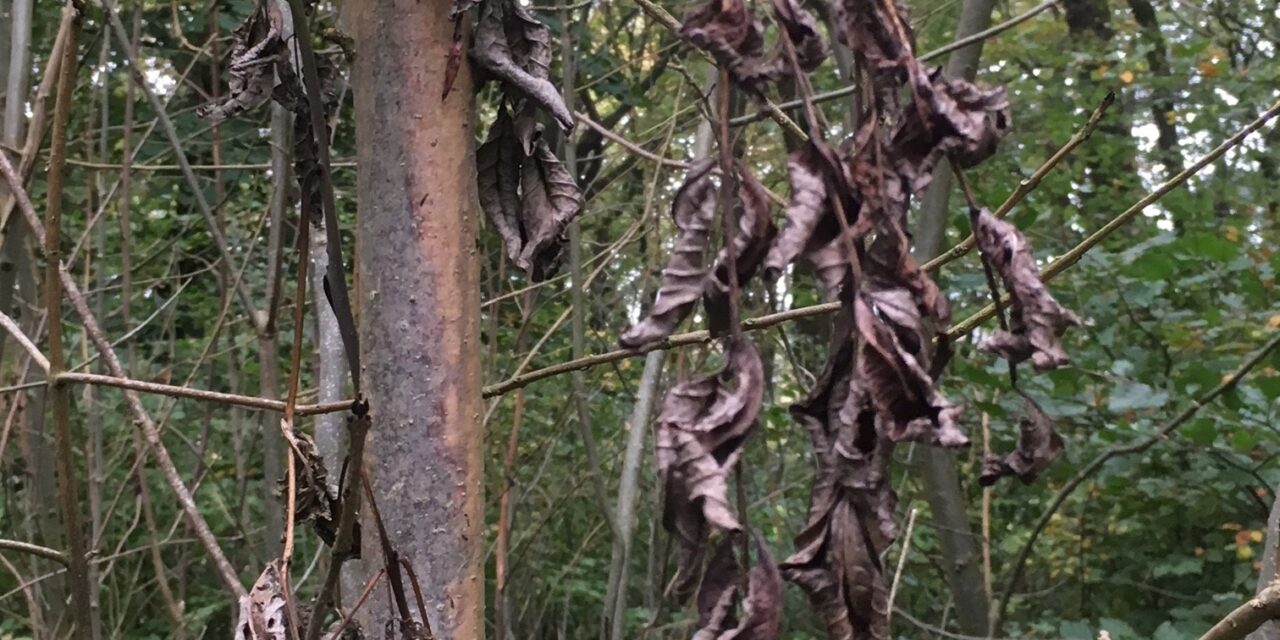Halton Borough Council is fighting back against rising instances of a deadly condition, which is attacking our Ash trees.
The borough could lose as many as 120,000 of its estimated one million trees through Ash Dieback disease, which could cost the UK £15 billion as a whole.
Ash accounts for about 12 per cent of broadleaved woodland or individual trees planted in the UK and planted extensively around Halton. Worryingly the first signs of infected trees were reported here last year.
Ash Dieback is caused by fungal spores transmitted in the wind. It is possible that the spores arrived in the UK naturally, although it is more likely to have been imported on Ash saplings from infected parts of Europe.
To mitigate the liabilities of Ash Dieback the Council is already working with National agencies and specialist contractors.
Firstly the process involves obtaining consents from the Forestry Commission to fell infected trees. The extraction of diseased trees will unfortunately involve the removal of other tree species.
This will be unavoidable, purely for practical reasons such as gaining access, or giving unaffected trees space to develop and grow. The removal of these trees will be kept to a minimum and selected on the basis where the trees have clear visual defects and their retention would be considered a significant risk to public safety.
Once the infected areas are cleared they can then be replanted with a mix of native tree species through the aid of a woodland stewardship grant.
Halton Borough Councol’s Executive Board Member for the Physical Environment, Cllr Ron Hignett, said: “The Council will retain as many disease tolerant Ash trees as possible.
“These will be identified through careful inspection and selection, by letting nature take its course will improve the resilience of our woods to future disease and climate change.
“There is no doubt the process of dealing with ash dieback will be evolutionary, initially working around the borough in areas that pose the greatest risk to public safety.
“In reassurance, these operations will be carefully considered with the National agencies and progressed at times of the year to have the least impact on wildlife and biodiversity.”
The Town Park in Runcorn is one of the first areas to be selected. Initially this work will be undertaken as a trial to gauge the level of resources and costs needed to help plan for the future. It will also support and enhance the range of environmental improvements already delivered in Town Park.
Experts say we are still in the infancy of the epidemic as the disease slowly marches across the country.
The professional industry anticipate at least 80 per cent of all ash trees will succumb to this disease.
Cllr Hignett continued: “This is going to have a devastating impact on the landscape and the biodiversity of Halton’s woodlands, as well as a major loss of connectivity between ecological habitats.
“The disease is chronic with a high mortality rate and particularly destructive of young ash trees, killing them within one growing season of symptoms becoming visible.
“Older more mature trees often survive an initial attack, but tend to succumb eventually after several seasons of infection.”
For more info, see: https://www.forestresearch.gov.uk/tools-and-resources/pest-and-disease-resources/ash-dieback-hymenoscyphus-fraxineus/

